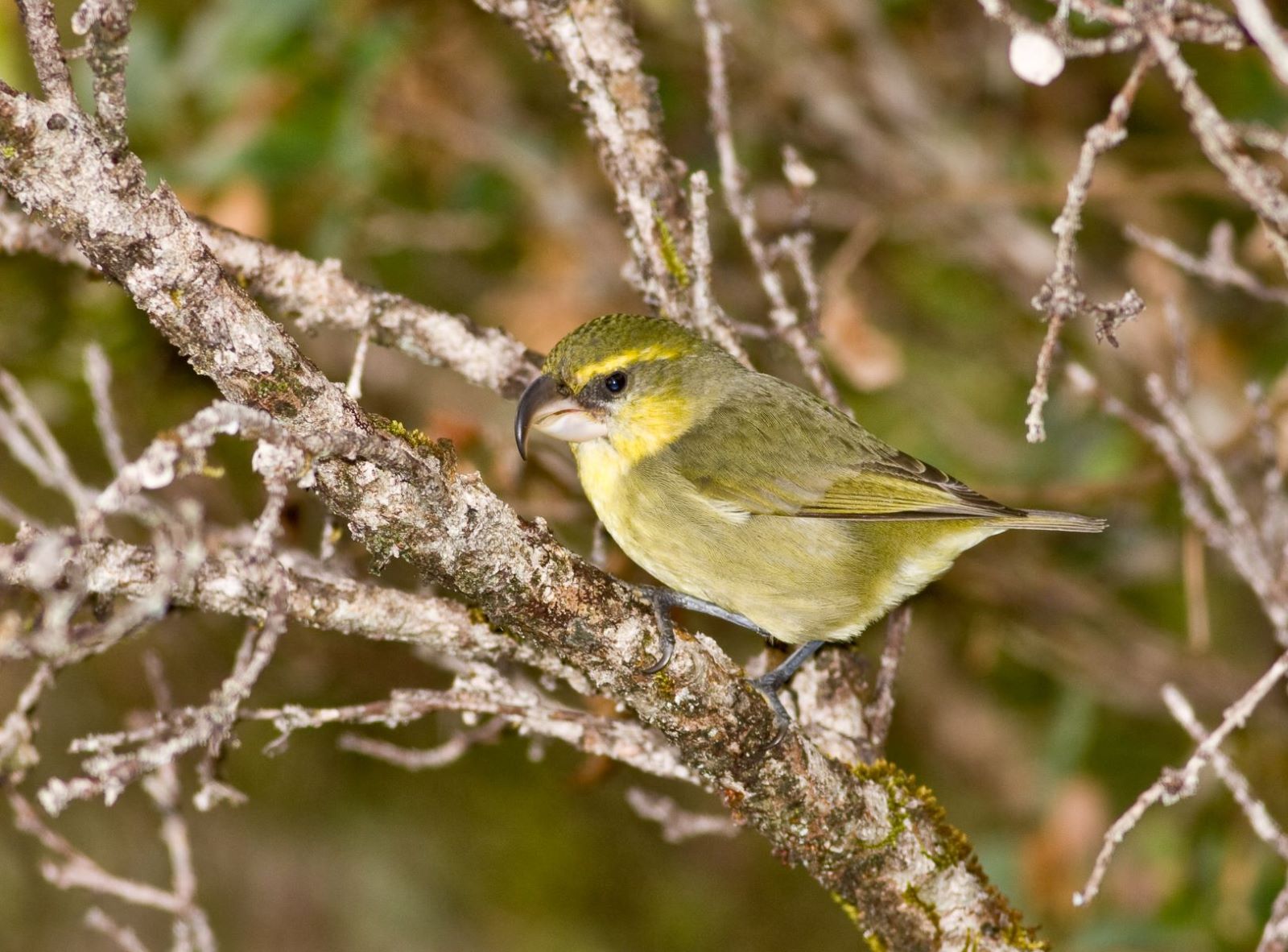Last updated: June 24, 2024
Lesson Plan
Maui's Hawaiian Honeycreepers and Adaptive Radiation

Endangered Kiwikiu bird rests on a branch in a forest
Michael R Neal
- Grade Level:
- High School: Ninth Grade through Twelfth Grade
- Subject:
- Science
- Lesson Duration:
- 60 Minutes
- Additional Standards:
- HS-LS4-4
HS-LS4-5 - Thinking Skills:
- Understanding: Understand the main idea of material heard, viewed, or read. Interpret or summarize the ideas in own words. Analyzing: Break down a concept or idea into parts and show the relationships among the parts. Evaluating: Make informed judgements about the value of ideas or materials. Use standards and criteria to support opinions and views.
Essential Question
What roles do different traits have on a species survival?
What factors have affected the Hawaiian honeycreeper population on Maui?
Objective
Students will learn about the evolution and adaptation of Maui’s forest birds. They will be able to describe how endemic species evolve through adaptive radiation. They will identify what environmental factors affect certain traits in the birds and any common ancestors the birds have.
Background
Students will learn about the evolution and adaptation of Maui’s forest birds. They will be able to describe how endemic species evolve through adaptive radiation. They will identify what environmental factors affect certain traits in the birds and any common ancestors the birds have.
Preparation
Teacher Preparation: 15 minutes
Lesson: 60 minutes
Materials
-
Computer access for each student or group
-
Student natural selection activity handout
Materials
Mission 1: Change the conditions so that you end up with a population of entirely brown rabbits. Page 13-14
Download Natural Selection Activity: Bunny Blitz! Mission 1
Mission 2: Change the conditions so that you end up with a population of entirely white rabbits with long teeth. Pages 14-15
Download Natural Selection Activity: Bunny Blitz! Mission 2
Review and answer questions. Can be done in groups or individually. Pages 15-16
Download Natural Selection Activity: Bunny Blitz! Discussion Questions
Lesson Hook/Preview
What factors have affected the Hawaiian honeycreeper population on Maui?
Procedure
Step 1: Direct Instruction
Students should have already been taught about evolution and natural selection
-
Introduce the topic by teaching about Darwin’s finches.
-
When British Naturalist, Charles Darwin explored the Galápagos Islands off the coast of Ecuador, he discovered 13 different species of finches. He noticed they were closely related, but each individual bird varied in small ways. This is an example of adaptive radiation which commonly happens on islands. (see https://www.pbs.org/wgbh/evolution/library/01/6/l_016_02.html)
-
Teach about adaptive radiation and how it has applied to the Maui forest birds.
-
Similar to the Galápagos finches, many endemic species of birds have evolved on Hawai‘i.
-
Scientists can see common ancestors of the birds through the birds that are alive now and fossil evidence of birds that are now extinct. For instance, 18 species of Hawaiian honeycreepers are known only through their fossil records!
-
We also see examples of coevolution, especially between the birds and the flowers. For example, the ‘i‘iwi’s long, curved bill has evolved to perfectly suck the nectar from the long, curved flowers found on Hawai‘i — such as the Hawai‘i lobelia.
-
What are some environmental threats that can lead to extinction of a species?
-
Habitat destruction
-
New species introduced causing competition and predation
-
Introduced diseases
-
What factors cause adaptive radiation?
-
Isolation
-
Available food resources
-
Intraspecies food competition
Step 2: Guided Practice
-
Natural Selection Activity: Bunny Blitz!
-
Students will use the simulation to change elements of the environment and possible mutations for a bunny population.
-
Complete various tasks in the simulation:
-
Create a population of entirely brown rabbits
-
Create a population of white rabbits with long teeth
Step 3: Conclusion
Maui is home to a diverse range of endemic birds. One special family of birds, the Hawaiian honeycreepers come from a common finch ancestor and have evolved into many distinct species that each fulfill a unique role in Hawaiian forest ecosystems. These species have evolved through the process of adaptive radiation.
It has taken a very long time for the Hawaiian honeycreepers to adapt to the specific environment on Maui and it is challenging for these birds to adapt quickly to the sudden changes in their environment caused by habitat loss, the introduction non-native species, and climate change. These factors have caused the extinction of many species of Hawaiian honeycreepers and left others endangered.
Step 4: Discussion
What can we do to help minimize the human impact on the Hawaiian honeycreepers?
Vocabulary
Adaptive radiation: the diversification of a group of organisms into forms filling different ecological niches.
Natural selection: the process whereby organisms better adapted to their environment tend to survive and produce more offspring. The theory of its action was first fully expounded by Charles Darwin and is now believed to be the main process that brings about evolution.
Evolution: the process by which different kinds of living organisms are thought to have developed and diversified from earlier forms during the history of the earth.
